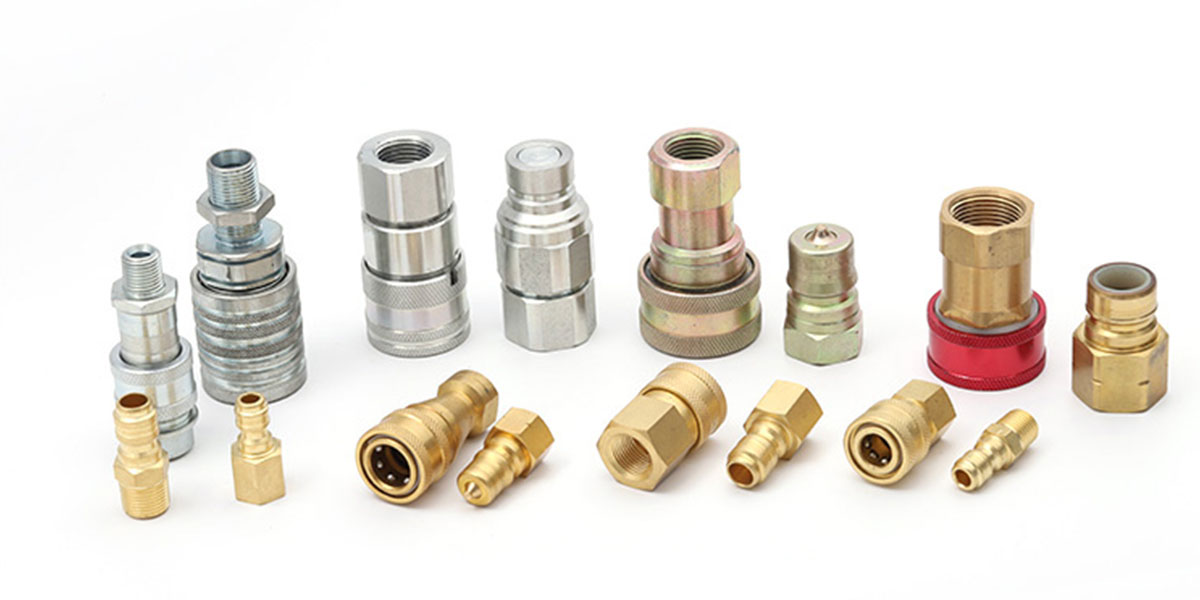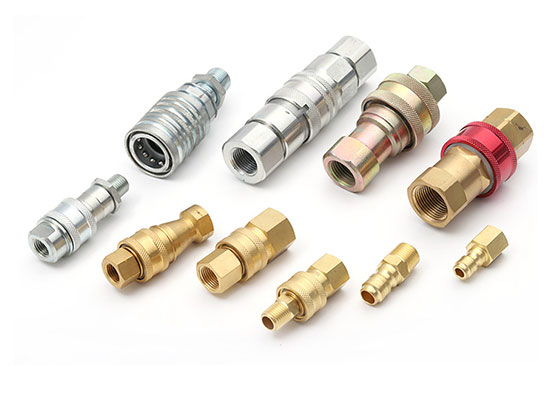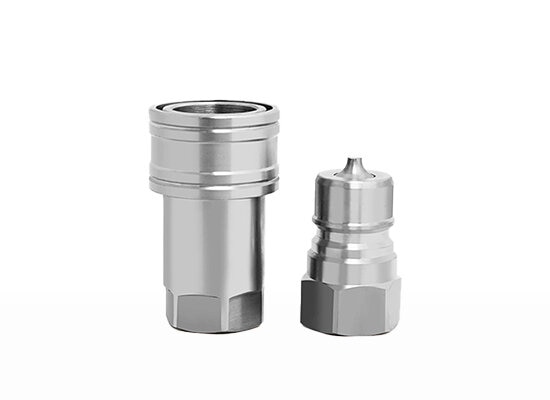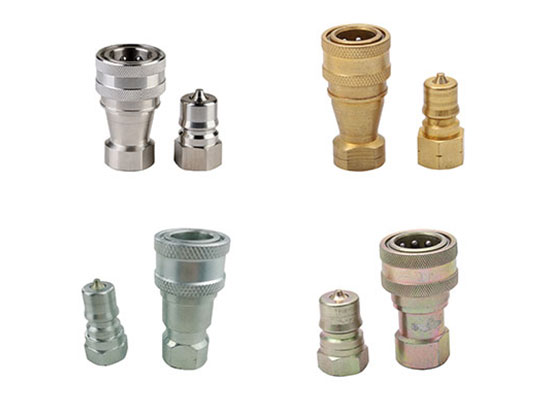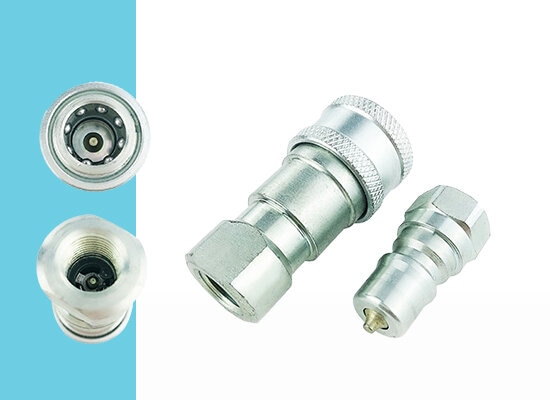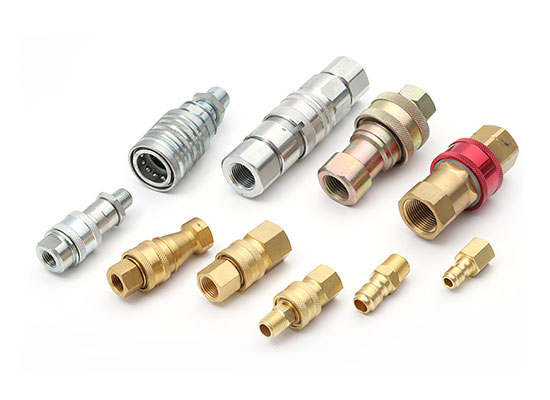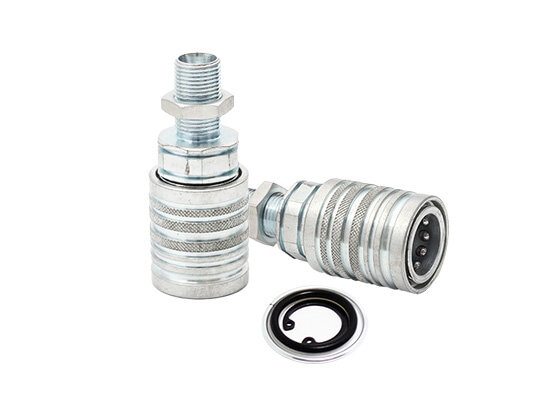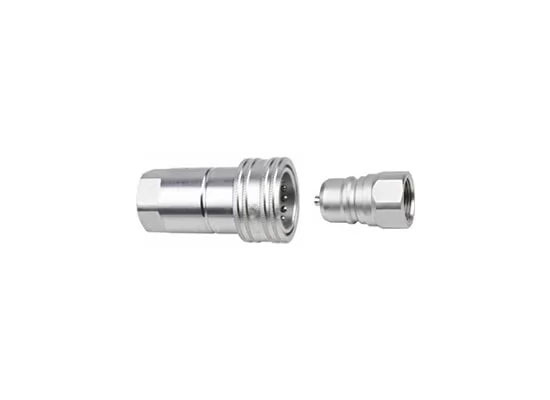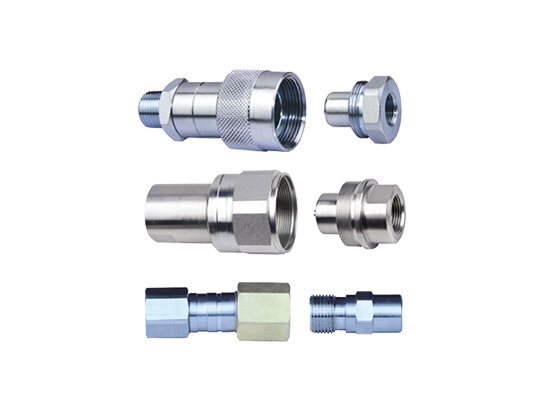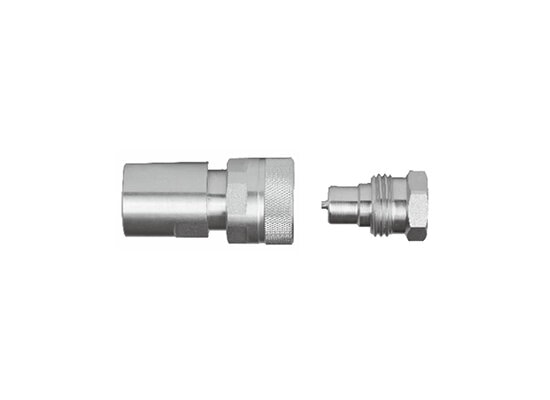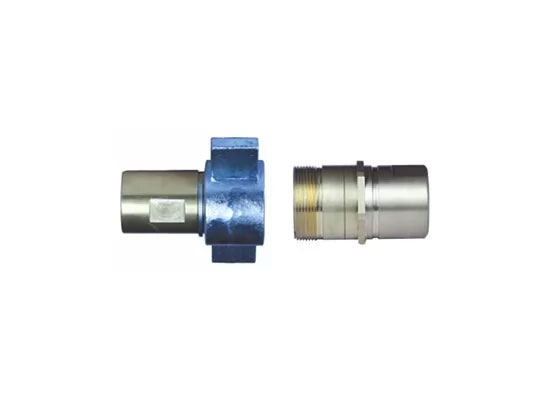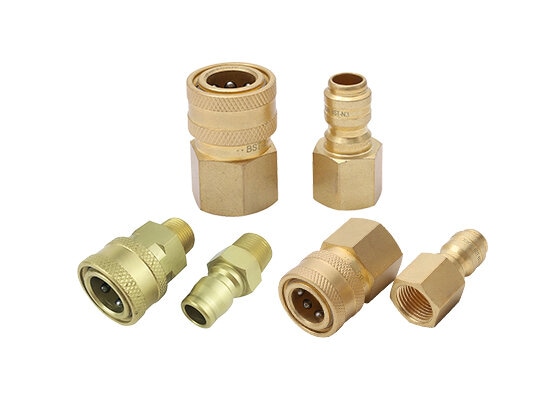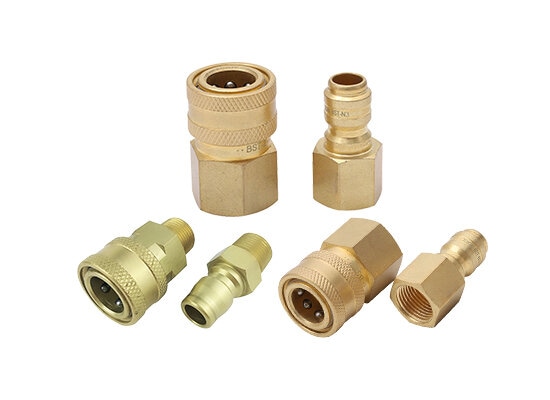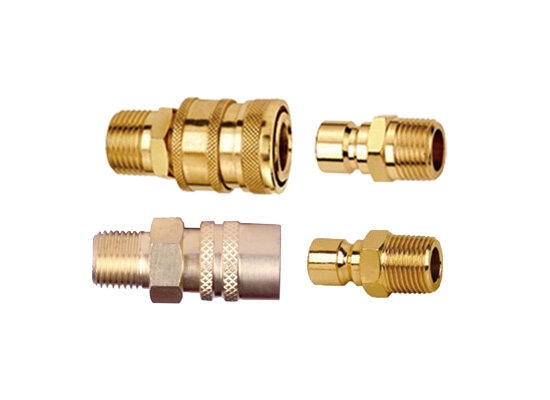What is Hydraulic Quick Coupling?
Each quick coupler consists of two main components: the male plug and the female socket. Once connected correctly, they allow fluid to flow and be controlled effectively. These two parts can be joined in several ways, such as with cone valve mechanisms, push-to-connect fittings, or threaded types. Additionally, the internal valve structure can vary—commonly seen designs include cone valves, ball valves, or flat-face valves.
Characteristics of Hydraulic Quick Coupling
◆ Quick Connect/Disconnect:
Hydraulic quick couplings allow for fast connection and disconnection of hydraulic lines, minimizing downtime and making maintenance operations more efficient.
◆ High Pressure Resistance:
Hydraulic quick couplings are designed to withstand high-pressure environments, withstanding pressures often ranging from 150 bar (2,175 psi) to over 700 bar (10,000 psi), depending on the specific coupling.
◆ Leak-Free Design:
When disconnected, these hydraulic quick release couplings are engineered to prevent leaks, even under high pressure, ensuring a clean and efficient hydraulic system.
◆ Durable Construction:
The hydraulic quick release coupling is typically made from high-quality materials such as stainless steel, carbon steel, and brass to ensure durability and longevity in demanding environments.
◆ Compatibility:
Hydraulic quick couplings come in various sizes and configurations, allowing for compatibility with different hydraulic systems, components, and standards.
◆ Corrosion Resistance:
Due to the environments in which they are used, hydraulic quick couplings often feature corrosion-resistant materials or coatings to prevent degradation over time, especially in outdoor or harsh conditions.
◆ Safety Features:
Many hydraulic quick couplings have built-in safety mechanisms, such as a locking feature, that prevent accidental disconnection during operation, ensuring the safety of operators and machinery.
◆ Sealing Technology:
Hydraulic quick couplings typically incorporate high-quality seals made from materials like rubber, elastomers, or metal to ensure a secure seal even under high pressure and fluctuating temperatures.
◆ Low Pressure Loss:
These couplings are designed to minimize flow restriction, which helps maintain efficient system performance without significant loss of pressure or flow rate.
◆ Ergonomic and Easy Handling:
Hydraulic quick couplings are often designed with user-friendly features, such as easy-to-grip handles or automatic locking mechanisms, making them simple to use in demanding applications.
Types of Hydraulic Quick Couplings
◆ ISO 7241 A Quick Coupling
◆ ISO 7241 B Quick Coupling
◆ KZD Medium-Pressure Hydraulic Quick Coupling
◆ KZF 304 Stainless Steel Hydraulic Quick Coupling
◆ FK-C1 Ball Valves Type Hydraulic Quick Coupling
◆ FK-CT Push and Pull Type Hydraulic Quick Coupling
◆ FK-FF Flat Face Hydraulic Quick Coupling
◆ KZE-B Thread Locking Hydraulic Quick Coupling
◆ FK-VVS Thread Locked Type Hydraulic Quick Coupler
◆ FK-L2 Thread Locking Hydraulic Quick Coupler
◆ FK-K1 American Type Open Hydraulic Quick Coupler
◆ FK-K2 Japanese Type Open Hydraulic Quick Coupler
◆ Other Hydraulic Quick Coupler
